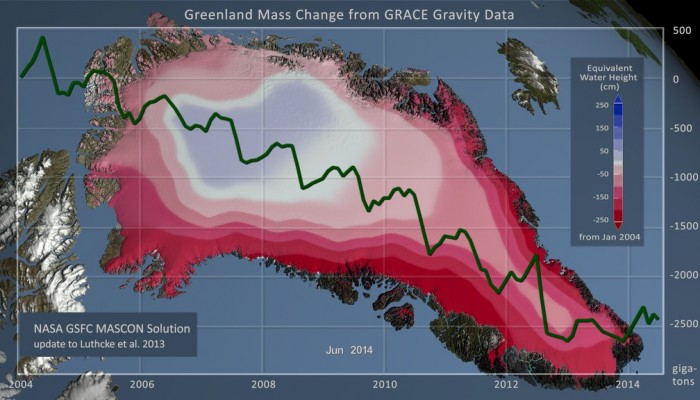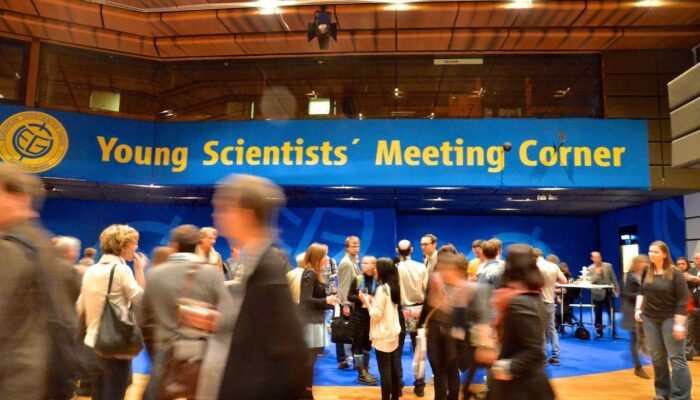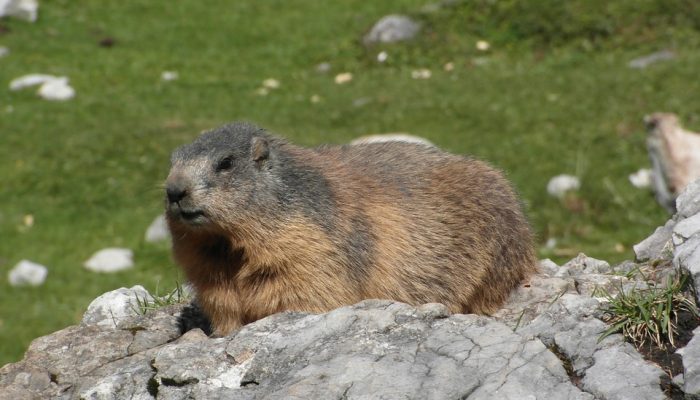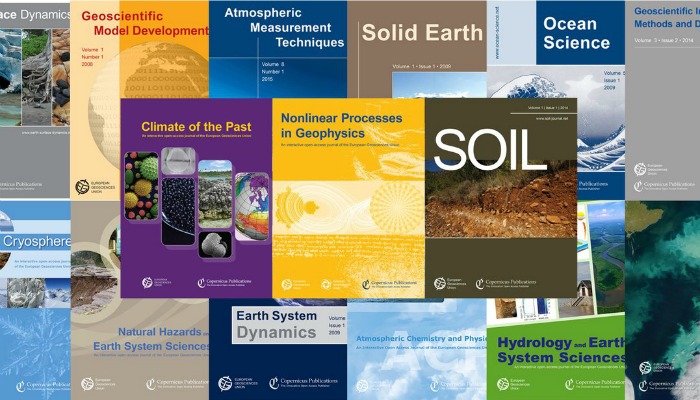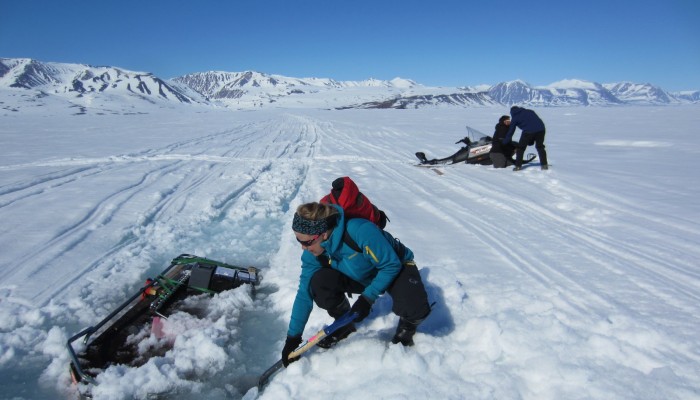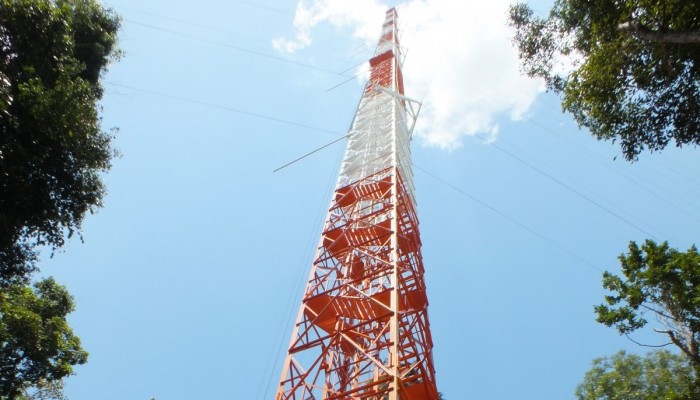Check out this very interesting read about Icequakes, available at the Cryospheric Sciences blog page. Cryosphere is the frozen water part of the Earth system, which includes ice that is found in the ocean, such as waters surrounding Antarctica and the Arctic. Read here: Cryospheric Sciences | Image of the Week: Icequakes! Stick-Slip motion under Western Greenland
Cryospheric Sciences
Image of the Week – Changes in the Greenland Ice Sheet Documented by Satellite
Monitoring the changing ice mass of the Greenland Ice Sheet provides valuable information about how the ice sheet is responding to changing climate, but how do we make these measurements over such a large area of ice? Using NASA’s GRACE satellites (twin-satellites flying in formation) it is possible to make detailed measurements of the Earth’s gravitational field. As ice is gained/lost from ...[Read More]
Seismology
Consider this: Take your career one step further
Early Career Scientist representative for the Seismology Division Why not take your career one step further? The Seismology Division within the European Geosciences Union is looking for an enthusiastic person to take the role of Early Career Scientist representative for the young generation of seismologists. Making awesome science is very important, but the scientific community does not only need ...[Read More]
Cryospheric Sciences
Image of the Week — Happy ValentICE’s day
On the eve of 14 February, love and little hearts are everywhere, even trapped in lake ice! The EGU Cryosphere blog team wishes you a happy Valentine’s Day :-) Behind this nice picture, there is also science This picture was taken during a laboratory experiment that aimed to reproduce the bubbles observed in Arctic lake ice in the winter. In this shot, we can see two types of gas bubbles in ...[Read More]
Seismology
The publication circle
In this and upcoming posts guest writer Kathrin Spieker will share her thoughts and experience about how to improve writing skills specifically aimed for publishing in scientific journals. Kathrin is a young seismologist who has recently started publishing her research as part of her PhD study. In this little series, I will talk about the three main parts of scientific publication. The first part ...[Read More]
Soil System Sciences
The long, long travel from rock to soil (I)
There is hardly a subject in all nature, of which the majority of people has so unclear terms and which has hitherto been so completely misunderstood, as the soil on which they walk. F.A. Fallou Soil is often considered as the skin of the Earth and is located at the interface between the lithosphere, hydrosphere, atmosphere and biosphere. Air, water, rock and living beings interact to form ...[Read More]
Soil System Sciences
Science results: special issues derived from EGU-Soil System Science sessions
The impact of the oral, poster and PICO presentations of the Soil System Sciences Division of the EGU is greater and greater. Because of the relevance of research results, conveners and contributors often decide to promote the publication of journal special issues. This list is a compilation (probably not complete) of some of these special issues published in scientific journals, with links to the ...[Read More]
Cryospheric Sciences
Image of the Week — slush on top of sea ice
Many glaciologists look forward to going on fieldtrips and then, once they are back, they make us dream by posting breathtaking photos (like THIS or THIS or THIS). However, the reality of the field can sometimes be very different…. The picture illustrates how difficult it can be to work on sea ice when the snow on top of it starts to melt and forms slush (a mixture of snow and liquid water t ...[Read More]
Biogeosciences
Sky-scraping Biogeoscience at 325m above the Amazonian rainforest
“The outcome of this project will help us to understand the Amazonian forest system before we all destroy it completely” The Amazon Rainforest in South America represents the Earth´s largest rainforest, housing at least 10% of the world´s known biodiversity and consisting of more than 350 billion individual trees. Besides its large diversity in floral and faunal species, the Amazonian ...[Read More]
Soil System Sciences
Soil science and policy challenges
Sarah Connors, EGU Science Policy Fellow Antonio Jordán, University of Seville Soil is often considered as the skin of the Earth and is located at the interface between the lithosphere, hydrosphere, atmosphere and biosphere. Soil is the physical and nutritional support for living organisms in emerged areas.

